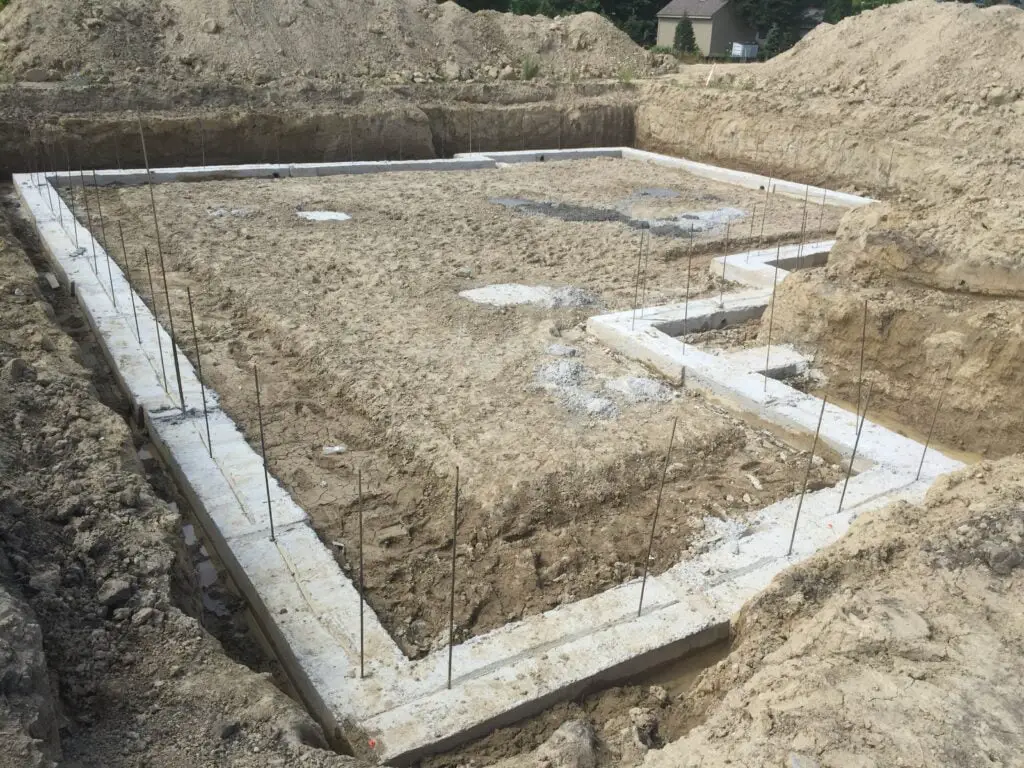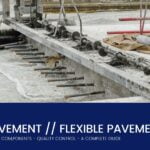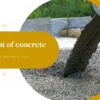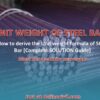Continuous footing is a type of shallow footing that supports long masonry, RCC wall, and two or more column in a row or line. It is same as strip footing for wall.
We prefer it to support load-bearing walls. We can also use it when two or more columns are in row and close together. It is rectangular or trapezoidal in shape.
The load from individual column is transferred either directly to footing slab or through longitudinal beam running between columns.
Detail
It comprises of a base for the wall and the beam at the bottom. The pedestal or strip of the footing is monolithically made with the rectangular beam that runs along the supporting wall.
You can use this type of isolated footing to support RCC wall and long masonry.
We prefer continuous footing over slab or raft footing where the soil has good bearing capacity. It can easily resist range of loading combinations.
Also Read: Foundation Failure – (Read it before its TOO Late)
Continuous footing vs combined footing
You must not confuse continuous footing with strap and combined footing. All these types are different and have their own purpose or use.
A combined footing is formed with isolated footing of two columns are closer than 2 meters. Whereas a continuous footing we connect all the columns or the walls to distribute loading.
| Sr. No. | Continuous Footing | Combined Footing |
| 1. | Continuous footing connects all the columns to distribute load. | Combined footing combines two columns that are closer to each other and have a distance less than 2 meters. |
| 2. | It can be used both for walls and columns. | Combined footing cannot be used for walls. |
| 3. | The loading is not distributed within columns. | The load here may be distributed among two columns. |
| 4. | The shape of footing is rectangular | The shape of footing can be trapezoidal or rectangular. |
Continuous footing vs strap footing
A strap footing can be a type of combined footing. In fact, a strap footing is a special case of combined footing where the columns are in cantilever.
It is used where you can’t place columns at the center of the footing. Such a situation arises, usually along the property line.
But continuous footing is somewhat different. Strap beam can only be used to connect two columns. Whereas in continuous footing all columns are joined together with a beam strip.

Design
The width and reinforcement of the continuous footing depends on the bearing capacity of the foundation soil. Sometimes the width of the footing is the same as the width of the wall.
But sufficient overhang is recommended to ensure adequate footing bearing area.
But during construction, we must ensure that the walls are made concentrically with the foundation beam. However, for footing adjacent to property line, you need to design eccentric footing to one side.
The footing is designed on the basis of ACI 318-19 standard.
Also read: Cantilever footing – Strap Footing – Uses – Design – Difference
Types of Continuous Footing:
Continuous footing is divided into two types which includes:
- Simple Continuous Footing
- Stepped Continuous Footing
Simple Continuous Footing:
It is a simple continuous footing without any step provided and employed for low scale structures which results in cheaper type of footing compared to stepped footing and carries less load as compared to stepped footing.
Construction of this type of footing is simple and straight-forward with limited use of material which is shown in figure below.
Also Read: 5 Types of footing – Best footing -Images – Uses [PDF]
Stepped Continuous Footing:
It is the type of continuous footing which is used for uneven land surface and consists of two or more steps. These steps in stepped footings are beneficial for increasing stability of building structure.
It is costly as compared to simple footing and employed for carrying heavy load as compared to simple footing. This type of footing is shown in figure below.
Design Consideration of Continuous Footing:
While designing continuous footing there are four types of variables which are considered according to conditions. These variables include:
- Width of Footing
- Thickness of Footing
- Depth of soil embankment
- Amount of steel reinforcement used
In case of width of footing, it is considered that width of footing should be twice to thickness of wall which is rested on footing.
In this case, width of footing is kept lower as compared to the length of footing as a result it provides continuous vertical support to the structure.
Thickness of footing depends upon the bearing capacity of soil. If bearing capacity of soil is higher than thickness of footing provided is lower and vice versa.

Uses of Continuous Footing:
This type of footing constitutes following uses.
- It is used to support load bearing walls.
- It is used to support Foundation wall.
- This type of footing is used when load bearing capacity of soil is lower.
- It is used when two columns are closed together and, in a row, or line.
- It is used when foundation of two columns overlap each other.
Advantages of Continuous Footing:
This type of foundation constitutes following advantages:
- It provides stability to structure.
- It transfers structure loads to a larger area.
- It distributes load of structure evenly.
- It bears horizontal and vertical forces.
- It prevents overturning of foundation because of longitudinal beam that is running between the columns.
Disadvantages of Continuous Footings:
- It requires a large amount of earthwork.
- It is not fit for unstable ground.
- It consists varying shape and sizes because of different site conditions.
Also Read: Deep Foundation – Types – Uses – Advantages – PDF


















